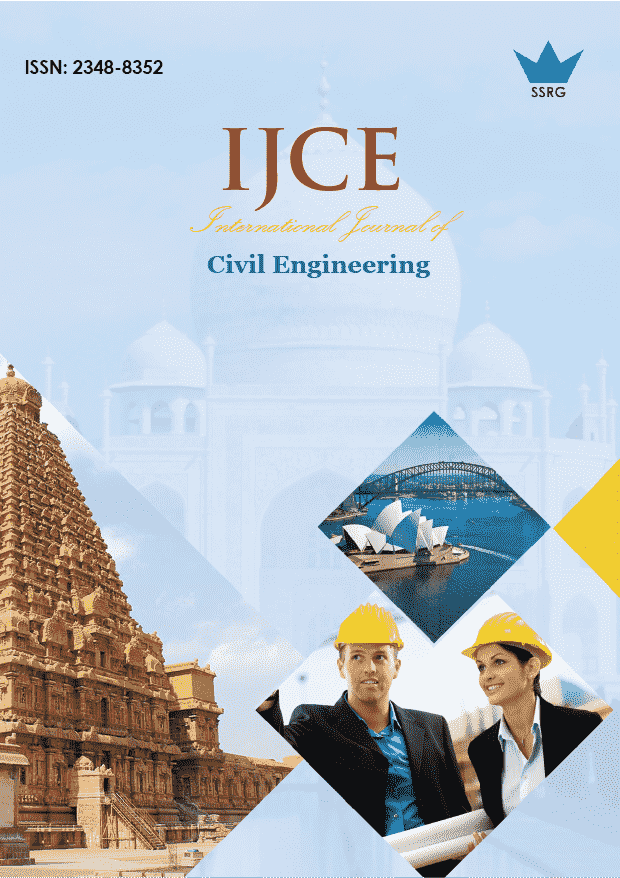Optimal Treatment of Ceramic Industrial Wastewater

| International Journal of Civil Engineering |
| © 2025 by SSRG - IJCE Journal |
| Volume 12 Issue 3 |
| Year of Publication : 2025 |
| Authors : Aya Samir Hamed, Mohamed El hosseiny El nadi, Faten Abdel Ghaffar El sergany, Amira Mohamed Nagy |
How to Cite?
Aya Samir Hamed, Mohamed El hosseiny El nadi, Faten Abdel Ghaffar El sergany, Amira Mohamed Nagy, "Optimal Treatment of Ceramic Industrial Wastewater," SSRG International Journal of Civil Engineering, vol. 12, no. 3, pp. 47-55, 2025. Crossref, https://doi.org/10.14445/23488352/IJCE-V12I3P105
Abstract:
This study aimed to determine the most efficient method to treat and reuse wastewater from the Ceramica Cleopatra factory in the 10th of Ramadan City, Egypt. A lab-scale pilot was designed and tested through four experimental runs. The system included three parallel treatment lines: the first combined chemical sedimentation with filtration, the second paired flotation with filtration, and the third consisted of cyclone separation followed by filtration. The wastewater used in the experiments had an initial concentration of 20,800 ppm. In the absence of coagulants, the sedimentation line achieved a removal efficiency of 99.51% (102 ppm effluent), the cyclone line reached 99.83% (34 ppm), and the flotation line recorded 99.70% (63 ppm). However, these results were inadequate for reuse in the ceramic industry. When ferric chloride was introduced as a coagulant, the sedimentation line’s efficiency increased to 99.95% (10 ppm), the cyclone line to 99.93% (16 ppm), and the flotation line to 99.94% (14 ppm). Despite the improvement, these results were still insufficient for industry requirements. The addition of coal filters significantly enhanced performance. The sedimentation line reached 99.95% efficiency (10 ppm effluent), the cyclone line achieved 99.97% (5 ppm), and the flotation line attained 99.96% (7 ppm). The cyclone line, combined with the coal filter, produced results that met the ceramic industry’s standards, marking it as the most optimal and effective wastewater treatment method for this application.
Keywords:
Cyclone, Filtration, Flotation, Sedimentation, Wastewater treatment.
References:
[1] Midwest Research Institute, “Emission Factor Documentation for AP-42 Section 11.7 Ceramic Products Manufacturing,” U.S. Environmental Protection Agency, Office of Air Quality Planning and Standards, Emission Factor and Inventory Group, Technical Report, pp. 1-55, 1996.
[Google Scholar] [Publisher Link]
[2] Frank Marscheider-Weidemann, “Methodology for the Free Allocation of Emission Allowances in the EU ETS Post 2012,” Fraunhofer Institute for Systems and Innovation Research, European Commission, Technical Report, pp. 1-128, 2009.
[Google Scholar] [Publisher Link]
[3] Sanitary-Ware Industry, Thewastewater. [Online]. Available: https://thewastewater.com/sanitary-ware-ceramic-tile-industry/
[4] George Tchobanoglous et al., Wastewater Engineering: Treatment and Reuse, McGraw-Hill Education, pp. 1-1819, 2003.
[Google Scholar] [Publisher Link]
[5] Muharrem Ince, and Olcay Kaplan Ince, Wastewater Treatment, IntechOpen, pp. 1-278, 2022.
[Google Scholar] [Publisher Link]
[6] Caecilia Pujiastuti, Egita Yulisningtyas, and Ira Pareira, “Ceramic Industry Wastewater Treatment by Chemical Coagulation Process,” Journal of Research and Technology, vol. 7, no. 2, pp. 217-226, 2021.
[CrossRef] [Google Scholar] [Publisher Link]
[7] A.R. Dinçer, and F. Kargı, “Characterization and Biological Treatment of Ceramic Industry Wastewater,” Bioprocess Engineering, vol. 23, pp. 209-212, 2000.
[CrossRef] [Google Scholar] [Publisher Link]
[8] N. Bhalodiya Sagar, R. Patel Neha, and N. Pamnani Arti, “Environmental Solution for Effluent of Tile Industry,” International Journal of Advance Research and Innovative Ideas in Education, vol. 2, no. 3, pp. 2011-2016, 2016.
[Google Scholar] [Publisher Link]
[9] Khalid H. Khalil, and Olfat H. Ibrahim, “Enhancing Ceramic Industry Effluent Wastewater Quality for Reuse,” International Journal of Engineering Research and Development, vol. 11, no. 11, pp. 42-53, 2015.
[Google Scholar] [Publisher Link]
[10] Salah ABO El-Eneina et al., “Industrial Wastewater Treatment and its Impact on Water Quality - Case Study,” Al-Azhar Bulletin of Science, vol. 22, no. 1, pp. 1-20, 2011.
[CrossRef] [Google Scholar] [Publisher Link]

 10.14445/23488352/IJCE-V12I3P105
10.14445/23488352/IJCE-V12I3P105